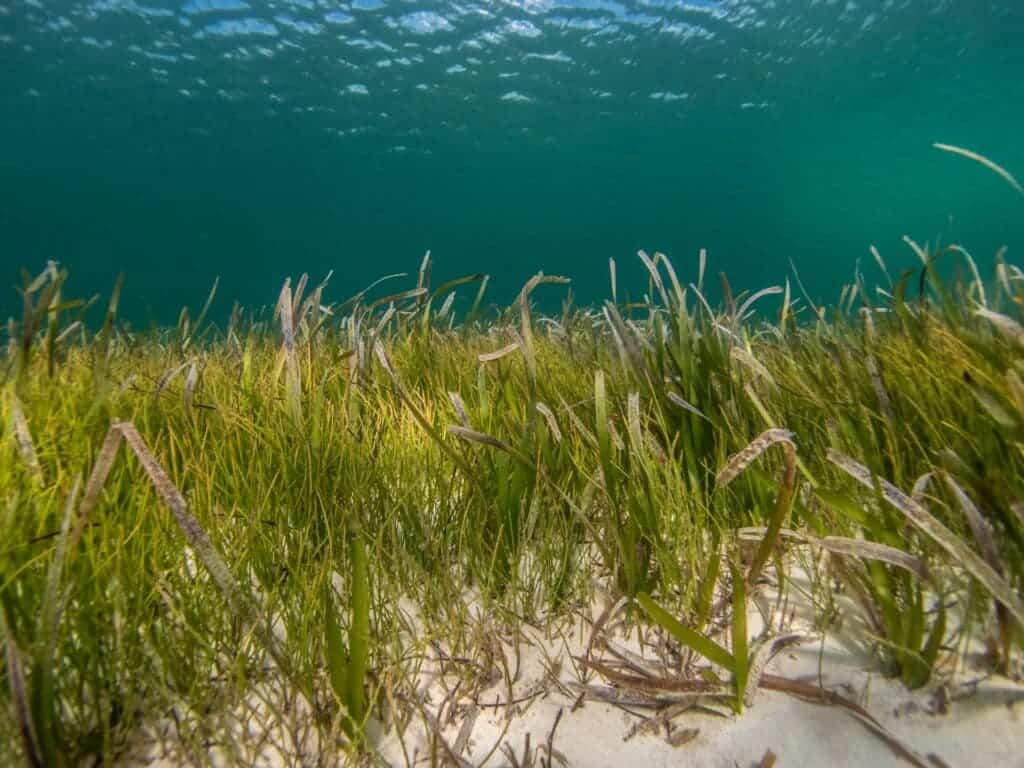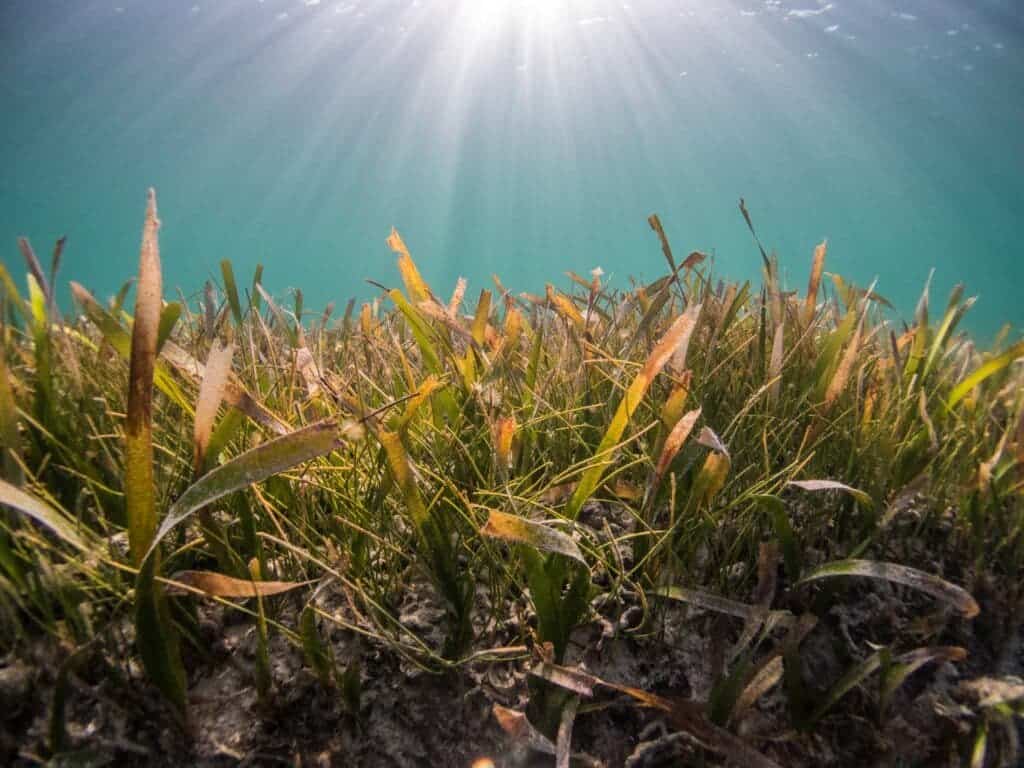Seagrass meadows are among the most important ecosystems on our planet. According to an estimate, about 50 million tiny invertebrates and 40,000 fish can thrive in just one acre of seagrass. Moreover, these underwater plants absorb 10% of the total carbon that deposits in the oceans annually and play an important role in reversing climate change. But they’re also one of the most overlooked ecosystems on the planet. Some researchers want to change that.

Scientists have known for a long time that soil microbes are involved in the terrestrial sequestration of carbon, but not much is known about the interaction that takes place between seagrass and rhizosphere (the oceanic substrate) in terms of carbon storage.
Recently, a team of researchers from the Max Planck Institute for Marine Biology in Bremen, Germany, has published a study that reveals the presence of large amounts of sucrose in the rhizosphere that stores millions of tons of carbon.
Sweetness below the surface
According to the researchers, there is so much sucrose underneath the seagrass meadows that if it degrades, it will emit the same amount of CO2 that is released by more than 300,000 cars each year. These findings are also surprising because microbes in the rhizosphere are expected to degrade sugar — but there must be something in the seagrass rhizosphere that is inhibiting the microbial activity. So what is it?
Lead author Maggie Sogin and her team collected water samples (porewaters) from seagrass meadows in the Mediterranean, Baltic, and Caribbean seas. They analyzed the porewater that also included sediments from the seagrass rhizosphere and came across very high levels of sucrose in samples that were taken around the seagrass roots. Their findings suggested that sucrose weighing between 0.67 to 1.34 trillion grams is present in the upper 30 cm seagrass sediments.
So basically, seagrass rhizosphere contains more than one million tons of sucrose globally — that’s the equivalent of 32 billion cans of coke.

During the analysis, researchers also discovered that sucrose-degrading genes were found in 80% of microbial genomes. However, only 64% of genomes could express those genes, which leaves about a third that can’t degrade sucrose. The analysis further revealed that seagrass release phenolic compounds that inhibit most of the microbial activity in the seagrass rhizosphere. Under low oxygen levels, these compounds prevent the microbial degradation of sucrose and favor its accumulation in large quantities underneath the meadows.
Therefore, the sucrose in the seagrass rhizosphere neither breaks down into CO2 nor does it ever return to the atmosphere.
“We spent a long time trying to figure this out. What we realized is that seagrass, like many other plants, release phenolic compounds to their sediments. Red wine, coffee and fruits are full of phenolics, and many people take them as health supplements. What is less well known is that phenolics are antimicrobials and inhibit the metabolism of most microorganisms,” said lead author Maggie Sogin.
How does seagrass happen to have so much sugar?
As compared to vegetation on land, seagrass holds twice the amount of carbon per square kilometer. Plus, it sinks carbon 35 times faster than forests on land. The high amounts of sucrose underneath the seagrass play a key role in this carbon management. Researchers have also noticed that sucrose concentration in the seagrass meadows has gone up 80 times since the last time it was measured. So where does all this sucrose come from?
Sucrose is produced by seagrass using photosynthesis, and its production depends on the amount of light that reaches the meadows. For instance, during the daytime when seagrass receives a good amount of sunlight, sucrose is produced in large quantities. Seagrass uses a considerable amount of sucrose for its own growth and the rest is sent to its rhizosphere.
In an interview with Verve Times, Nicole Dubilier, Director at the Max Planck Institute for Marine Microbiology explains that seagrass is basically suffering from success, producing more useful things than it can consume:
“Under average light conditions, these plants use most of the sugars they produce for their own metabolism and growth. But under high light conditions, for example, at midday or during the summer, the plants produce more sugar than they can use or store. Then they release the excess sucrose into their rhizosphere. Think of it as an overflow valve.”
Unfortunately, seagrass meadows that hold great importance for our ecosystem, oceans, and climate are currently struggling for their existence. A report reveals that due to excessive fishing, water pollution, and lack of conservation efforts, every 30 minutes, the oceans are losing seagrass coverage of the size of a football stadium. According to a 2021 study, the UK alone has lost more than 90% of its seagrass meadows and these habitats are also vanishing fast around places like Florida, Indonesia, and Singapore.
If such trends continue, then we might see extra carbon emissions amounting up to one billion metric tons a year – this is roughly twice the amount of carbon emitted annually by countries like France and Italy. Therefore, governments, environment protection agencies, and policymakers are required to take strong decisions to ensure seagrass protection globally.






